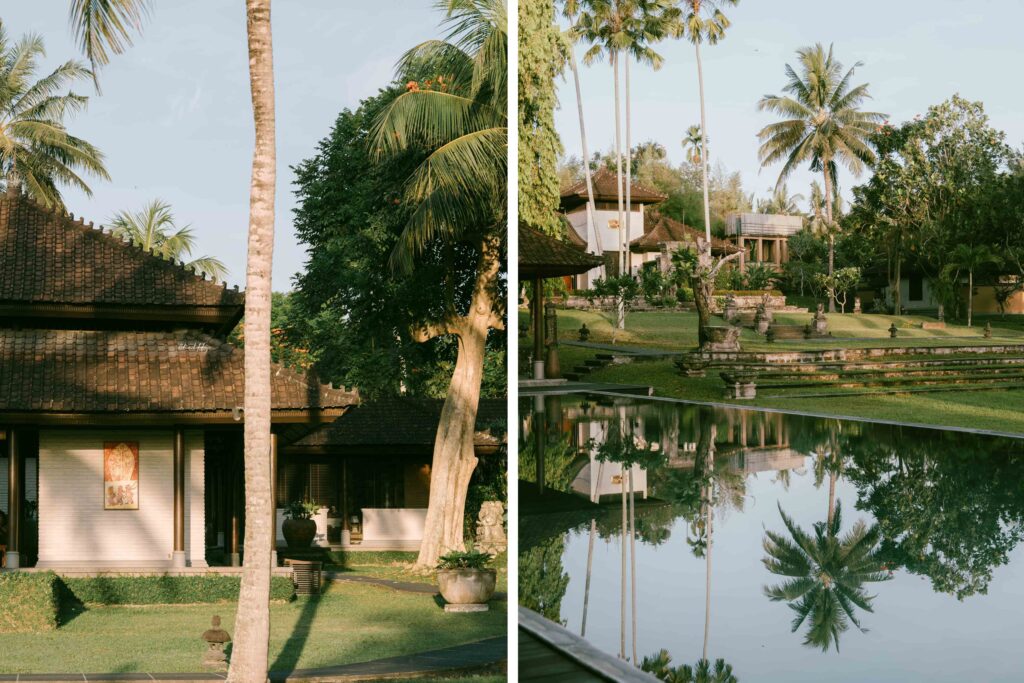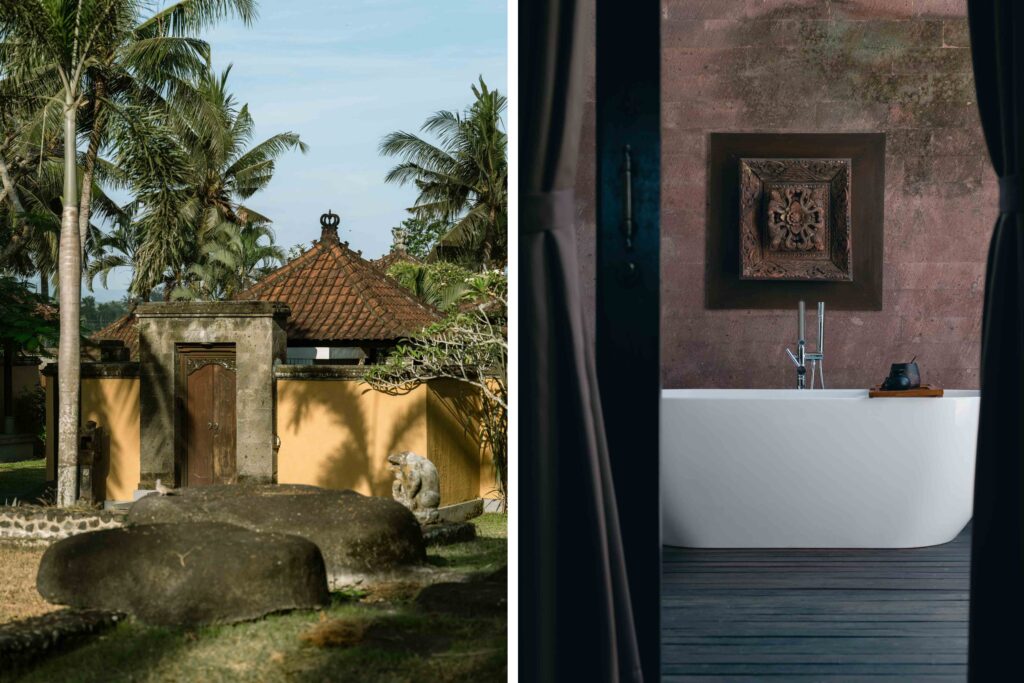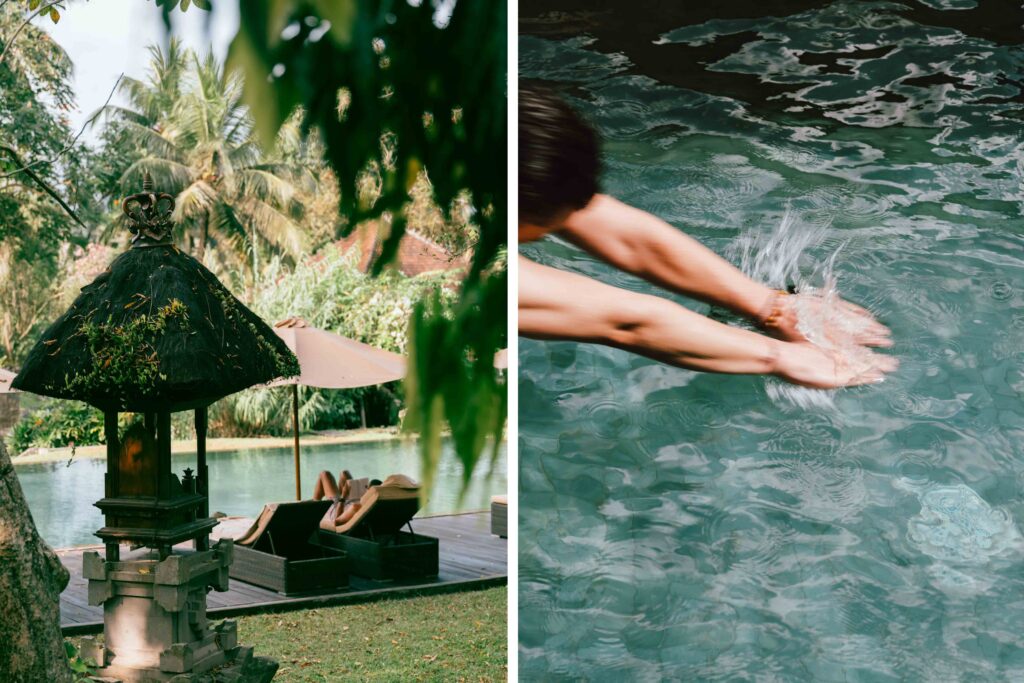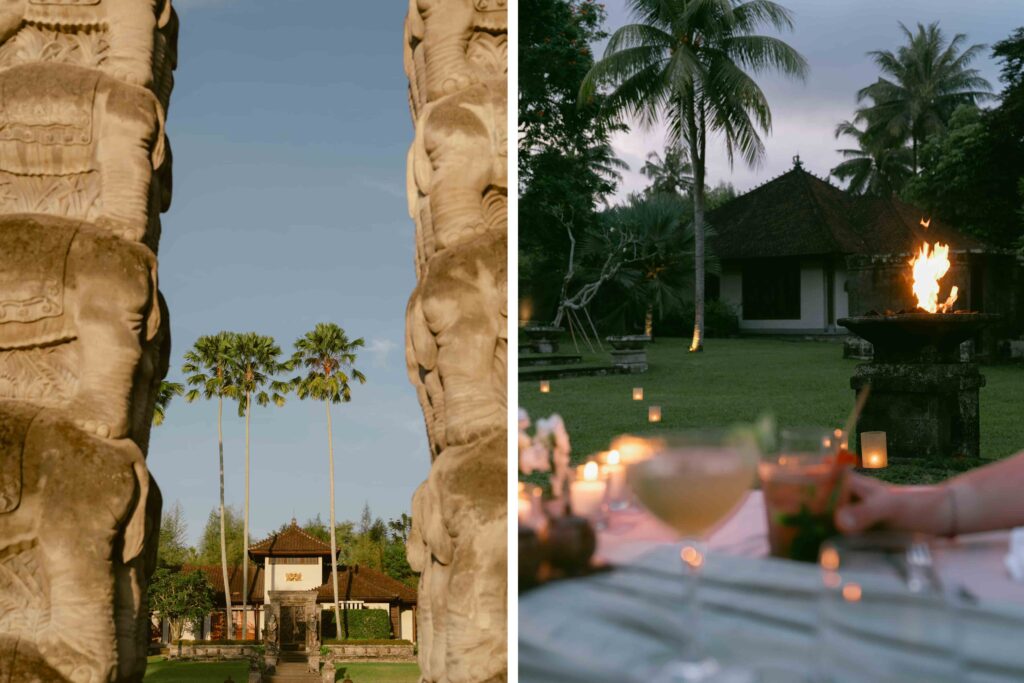My family’s house stands quietly in southern China, built in 1999 as a promise for the new millennium. My father often called it his gift to us, his vision of a new era expressed in stone and timber. From the earliest sketches to the last touches of decoration, every stage was shaped by the hands and hearts of close friends and family, each contributing something lasting. This three-story courtyard home, designed in traditional Chinese style, includes the largest garden in the neighborhood—my late grandfather’s legacy, where fruit trees and flowers bloom in harmony.
Though I no longer live there most of the year, every memory feels alive. The fragrance of osmanthus drifting through autumn air, sunlight filtering through leaves in dappled patches, the soft rustling of summer breezes that sweep through the rooms, and the quiet laughter of family and friends in the courtyard at night—all these moments echo within the house’s walls. By today’s standards, this house may seem modest, but for me, it’s an intimate world, layered with love and devotion, sometimes subtle, sometimes vivid. Each gesture, each detail, speaks of my family’s love to each other, and they shaped my understanding of the world beyond, framed by this cherished home.
And in this house, I can see our family’s devotion to our homeland.
On my visit to Bali, I set aside a few days to stay at Tanah Gajah and Dua Dari. Both estates, originally created by the legendary architect Hendra Hadiprana as family homes, now welcoming guests from afar. These homes-turned-hotels felt like the perfect places to reflect on the essence of “home” for me on Bali’s landscape.

In the rainy season in Ubud, afternoons grow thick and steamy, recalling the endless spring rains of home. After navigating a stretch of congestion and noise, a sudden clearing appeared—a broad avenue stretches into a tangled expanse of trees. Glancing to the right, past the lush greenery of the river valley, I could catch sight of a stone bridge leading to a grand gate and towering walls. It’s as if I’ve slipped down Alice’s rabbit hole. Ahead lies a sprawling estate veiled in tropical plants, dotted with traditional Balinese pavilions. In the soft afternoon light, palm trees sway, a refreshing breeze stired, and a calmness settled over everything as a staff approached, smiling as though we’re old friends.
This story begins in 1960, when Hendra Hadiprana and his wife first arrived in Bali for their honeymoon. Enchanted from the moment they set foot on the island, Hendra returned frequently, drawn back with family and friends. On one of his visits to Ubud, while exploring Goa Gajah—the Elephant Cave—he stumbled upon a vast stretch of rice fields. Here, he made a quiet wish to one day build a retreat for his family on this very land. In 1984, he set about fulfilling that promise, constructing a 500-square-meter villa on this tranquil patch of paradise. For years, he and his family returned to this secluded haven, finding in Bali their own hidden world of peace.
Today, this once-private six-hectare estate has evolved into Tanah Gajah, a luxury resort with only twenty private villas nestled in the lush heart of Bali. Expansive green fields and dense foliage cradle each villa, creating serene, secluded worlds all their own.

As one of Indonesia’s most esteemed architects, Hendra Hadiprana sought to weave his designs seamlessly into the natural landscape, drawing deeply from local traditions. Yet tradition and nature, for him, were not synonymous with simplicity. As the visionary behind some of Bali’s finest luxury resorts, he mastered the art of fusing modern comforts with architectural authenticity. His work carries a singular aesthetic: sweeping landscapes, homes echoing traditional Java styles, expansive private sanctuaries, pools, and the subtle presence of art and handcrafted details. This was Hadiprana’s promise—to offer guests an experience imbued with the elegance and tranquility of royalty.
He drew his inspiration from the ancient palaces of Javanese kings, the Keraton, where high walls, encircling trees, and serene pools ensured privacy and calm for the royal family. At Tanah Gajah, a sanctuary first built for his beloved family and now a hidden retreat for guests, Hadiprana realized his vision of secluded grace.






Strolling through Tanah Gajah, I often felt as if the estate had cast a spell, allowing me the illusion of being its sole master. From the rooftop of the Tempayan restaurant, a flock of white doves took silent flight, sweeping over the rice fields and vanishing into a grove of palms. Moving toward the lawn, I spotted the cerulean pool—a glimmering jewel set amid green grass. The only sound was the gentle trickle of water from a Ganesha fountain, marking time in soft, rhythmic beats. Lotus softened in the angled sunlight, their reflections mingling with the graceful swans on the pond. Not a single other guest appeared in sight, as though Hadiprana had crafted this world for each visitor to savor in solitude. The faint fragrance of flowers drifted from my villa, mingling with the scent of tropical fruits in my room—a quiet symphony of the tropics. As the light of day waned, casting a golden glow over the pool, smoke rose from village fields as evening began.
This scene felt both familiar and distant, woven from hazy memories of childhood summers and the quiet daily rhythms of family life back home.
Beyond this pastoral landscape lies the Indonesian archipelago, once a vibrant trade route between China and the Arab world, long open to foreign influences. Cultures from afar have touched Sumatra and Java, fostering a distinct Javanese culture and leaving traces throughout Balinese life. When Hadiprana returned from his studies in the Netherlands, Indonesia stood at a crossroads, filled with both hope and melancholy. Expressing Indonesia’s essence through his art felt as natural as breathing—a way to share his culture with the world.

In Bali, homes and palaces are not singular structures but rather a series of buildings, each with its own distinct purpose. At Tanah Gajah, aside from the private villas, each building—the restaurant, the lounge, the pavilion—stands open-sided, sheltered by dense trees. Walking among them, one might almost imagine Hadiprana and his family strolling in quiet conversation, or hear the echoes of exchanges he shared with artist friends beneath the pavilion’s roof.
These traditional Balinese structures are profoundly shaped by Balinese Hinduism, mirroring the island’s philosophy, spirituality, social bonds, and ways of life. Thatch roofs, bamboo, coconut wood, teak, and stone feature prominently; here, the Balinese aspire to live harmoniously with nature, drawing deeply from the island’s rich natural resources.
The Balinese possess a remarkable talent for intricate carving, adorning their temples and palaces with astonishing detail. At Tanah Gajah, these carvings lend a quiet grace to the traditional architecture, a subtle elegance that captivates without overwhelming.




As I wandered through Tanah Gajah, the architecture seemed to unfold slowly, with sculptures and artworks emerging in secluded corners, each claiming its space with quiet authority. These pieces form Hadiprana’s personal collection. Founder of Indonesia’s first modern gallery and one of the nation’s most respected collectors, Hadiprana played a pivotal role in bringing Indonesian artists to the world stage. Art, as a pure expression of human emotion, finds a natural home here, scattered throughout the hotel in a distinctly Indonesian aesthetic. Each piece reflects the artist’s connection to the land. As Hadiprana once expressed, “I hope people can capture their first impressions of Bali through art.” Those impressions linger, leaving a lasting impact.


One sentiment recurs in books about Hadiprana: “If a work of art is visually stunning but fails to reveal the artist’s heart, soul, and wisdom, I feel deeply disappointed. In such cases, the artist’s hand seems to betray their own life.” At Tanah Gajah, and in each of his hotels, artworks serve as harmonious adornments, blending seamlessly with their surroundings. Hadiprana carefully observed the lives of artists, weaving their stories and creative energies into his designs. Through his architecture and interiors, I feel a deep artistic resonance, a powerful personal imprint. This impression arises not only from the works scattered throughout the estate but also from Hadiprana’s own unwavering devotion to Indonesian and Balinese culture, art, life, and family.
In traditional Javanese palaces, architecture leads inward, drawing from the outer edges toward a central core. At Tanah Gajah, that heart is Hadiprana’s private villa. The surrounding buildings and artworks echo the artists, friends, and family he encountered throughout his life; no matter their backgrounds or origins, they converge here, creating a haven where tradition and grace converge in harmonious solitude.

To the traditional Balinese, the concept of “art” itself can feel almost foreign, as art here is inseparable from religious devotion. Every creation, every movement is woven into the fabric of the spiritual. Dances are not performed for mere pleasure or spectacle; they are acts of communion with the divine. Raised in a culture steeped in dance, the Balinese carry a natural grace, each gesture of the eyes, arms, wrists, fingers, and toes holding a beauty distinctly their own.
Thick clouds drifted across the night sky above the elephant gate, and the moonlight flickered in and out, casting shadows over the courtyard. The dancers, rising like smoke with the music and the light rain, seemed to breathe life into the towering trees. They circled together on the grass, moving in harmony, their rhythmic chants and flickering fire imbuing the air with a presence that felt sacred.
Through their movements, they summoned legends and Indian epics passed down through generations, stories imprinted on the island’s memory. Here, where daily life and tradition are woven tightly together, these repeated performances are acts of devotion—expressions of an unyielding love and loyalty to their homeland.
As the night settled, a faint haze of longing hung in the air, subtle but unmistakable.
Leaving Tanah Gajah, I made my way toward Dua Dari, a private sanctuary nestled in a quiet valley. If Tanah Gajah embodies Hendra Hadiprana’s profound love for his family, then Dua Dari reveals an even more intimate facet of that affection. The moment I stepped inside, a sense of warmth and personal connection enveloped me. This was no ordinary hotel; with just four rooms, it felt like a private residence, still cherished by Hadiprana’s family as their holiday retreat. Personal items remained in the rooms, transforming the place from a guesthouse into a home—a sanctuary where I felt invited into the heart of Hadiprana’s world.






Each morning, as I watched the sun rise over the valley, a quiet sense of fulfillment would wash over me—unexpected and profound. Here, in this tranquil retreat, I felt as if I had stumbled upon something I had long been seeking, perhaps a kind of peace or a connection to a deeper narrative. Memories of home, of love, emerged as vividly as the landscape surrounding me.
Chateaubriand once wrote, “Everyone carries a world composed of all they have seen and loved, a world that even when they seem to travel or live in a different one, they keep returning to.” This thought echoed in my mind as I moved between Tanah Gajah and Dua Dari. Hadiprana’s life—a blend of international acclaim and unwavering devotion to his family and homeland—lives on in the spaces he shaped. The stories of Indonesia, woven from threads of pain, hope, nostalgia, and dreams, are etched into the very walls of these places. As a storyteller of his homeland, was he not, in some way, an angel of its tales?
The pursuit of connection—to a land, to loved ones, to a peaceful refuge for the soul—occupies so much of a person’s life. At Tanah Gajah, I found myself often recalling moments of quiet serenity from my own childhood, as if the gentle rhythms of my past had come to life again in the tranquil beauty of Bali.
